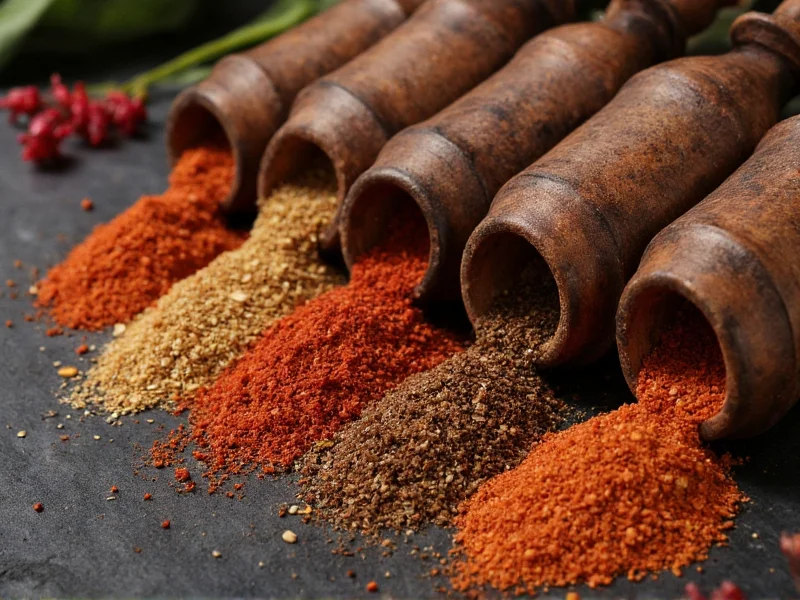Voodoo seasoning emerged from the rich culinary traditions of New Orleans, where French, African, Spanish, and Caribbean influences converged. Despite its name suggesting mystical origins, this spice blend has practical roots in Louisiana's food culture. The term "voodoo" references the vibrant cultural heritage of the region rather than any supernatural properties. Local chefs developed this seasoning to capture the essence of Creole and Cajun cooking in a convenient blend that home cooks could easily use.
The distinctive flavor profile comes from a carefully balanced combination of ingredients. Traditional voodoo seasoning contains:
| Core Ingredients | Supporting Elements | Heat Modifiers |
|---|---|---|
| Paprika (sweet or smoked) | Garlic powder | Cayenne pepper |
| Onion powder | Dried oregano | Black pepper |
| Thyme | White pepper | Red pepper flakes |
| Sea salt | Lemon pepper | Paprika (hot variety) |
What sets voodoo seasoning apart from standard Cajun or Creole blends is its emphasis on herbal notes alongside the heat. While many commercial blends focus primarily on heat intensity, authentic voodoo seasoning creates harmony between the smoky, sweet, herbal, and spicy elements. This balance makes it particularly versatile for various cooking applications without requiring additional seasoning adjustments.
Chefs specializing in Southern cuisine recommend using voodoo seasoning as both a dry rub and finishing spice. For meats, apply generously 30 minutes before cooking to allow flavors to penetrate. When using in sauces or soups, add during the last 10-15 minutes of cooking to preserve the delicate herbal notes that can dissipate with prolonged heat exposure. The seasoning works exceptionally well with:
- Seafood dishes, particularly shrimp and crawfish
- Poultry, especially roasted or grilled chicken
- Vegetable medleys featuring okra, bell peppers, and tomatoes
- Bean dishes and rice preparations
- Homemade mayonnaise for remoulade sauce
When comparing voodoo seasoning vs cajun seasoning, the primary difference lies in complexity versus heat. Cajun blends typically emphasize heat with heavier cayenne content, while voodoo seasoning incorporates more herbs and balancing elements. Creole seasoning often contains more paprika and less heat than both. Understanding these distinctions helps home cooks select the right blend for their specific recipe needs.
For those interested in homemade voodoo seasoning, creating your own blend allows customization of heat levels and flavor intensity. A basic recipe combines 3 tablespoons paprika, 1½ tablespoons garlic powder, 1 tablespoon onion powder, 1 tablespoon dried thyme, 1 tablespoon dried oregano, 2 teaspoons cayenne pepper, 1 teaspoon black pepper, and 1½ tablespoons sea salt. Store in an airtight container away from light and heat to preserve flavor compounds, which typically remain potent for 4-6 months.
When shopping for commercial voodoo seasoning, check ingredient lists for artificial additives or excessive salt content. High-quality blends contain only natural spices without fillers. The best voodoo seasoning for blackened fish differs slightly from blends optimized for roasted vegetables, so consider your primary cooking applications when selecting a brand. Many specialty food stores and online retailers offer regional blends that capture authentic New Orleans flavor profiles.
Proper storage maintains voodoo seasoning's potency. Keep your blend in a cool, dark place in an opaque container or tightly sealed jar. Avoid storing near the stove or oven where heat and humidity can degrade the spices. For extended shelf life, some chefs recommend refrigerating homemade blends, though this isn't necessary for commercial products with proper packaging.
Understanding how to use voodoo seasoning effectively transforms ordinary dishes into extraordinary culinary experiences. Start with smaller amounts than you might use with standard seasoning blends, as the complex flavor profile means a little goes further. Taste as you cook and adjust gradually—this approach prevents overpowering your dish while allowing the nuanced flavors to shine through.
What's the difference between voodoo seasoning and Cajun seasoning?
Voodoo seasoning typically contains more herbs like thyme and oregano compared to Cajun seasoning, which emphasizes heat with higher cayenne content. Voodoo blends create a more balanced flavor profile with smoky, herbal notes alongside moderate heat, while Cajun seasoning focuses primarily on spiciness.
Can I make voodoo seasoning without cayenne pepper?
Yes, you can create a milder version by substituting cayenne with additional paprika or using black pepper for heat. For authentic flavor without intense spice, try using ½ teaspoon cayenne or replace it with 1 teaspoon smoked paprika to maintain complexity while reducing heat.
What dishes work best with voodoo seasoning?
Voodoo seasoning excels with seafood (especially shrimp and crawfish), roasted chicken, vegetable medleys featuring bell peppers and tomatoes, bean dishes, and as a base for remoulade sauce. Its balanced flavor profile enhances rather than overwhelms these dishes.
How long does homemade voodoo seasoning last?
Properly stored in an airtight container away from light and heat, homemade voodoo seasoning maintains optimal flavor for 4-6 months. Commercial blends typically have a longer shelf life of 1-2 years due to specialized packaging that protects against moisture and light exposure.











 浙公网安备
33010002000092号
浙公网安备
33010002000092号 浙B2-20120091-4
浙B2-20120091-4